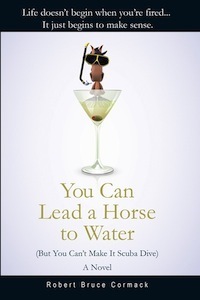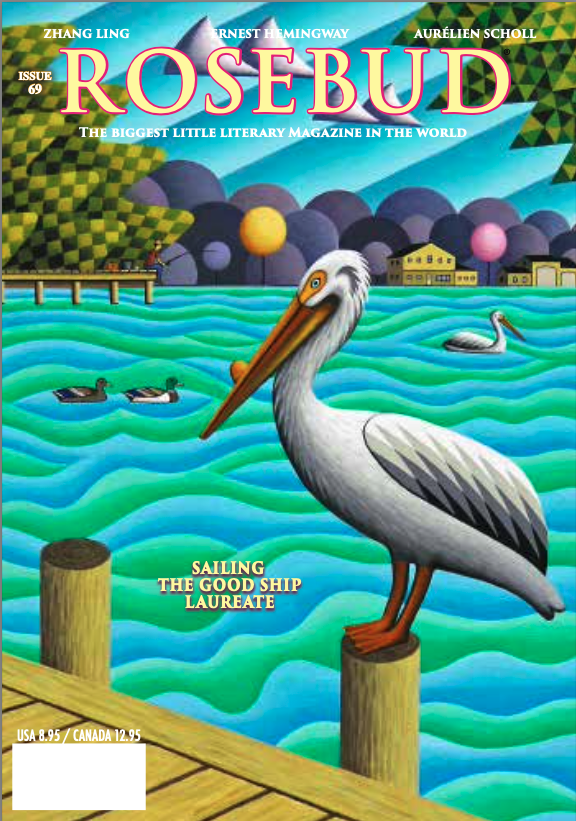If Your Product Isn't Selling, Maybe It's Dead (An Adman's Lament)

We sell a lot of dead products these days. Every car I see advertised is dead. It’s just metal to me. I feel no emotional attachment. Nor do I feel anything for most products advertised. All I see is metal, plastic, paper and liquid ooze.
If manufacturers are worried, they should be. If retailers are throwing up their hands, they have good reason. They’re selling dead objects.
We forget that products are like people. They live or they don’t live. The day you treat products like lifeless objects, you’ve confirmed their deaths. The same goes for consumers. Treat them like inanimate objects and they’re dead, too.
Look at how we treat consumers today. We rely on demographics, buying trends, even data mining. We don’t see people. We don’t feel them. It’s like the bomber pilot who never witnesses the actual destruction below. All he sees is topography. He can only suppose what’s happening down there.
That’s the problem with advertising today. We don’t know what’s going on “down there” either. We’re too busy with numbers and features. We make pronouncements like “You’re gonna love this car.” Sure, it makes us feel good saying it. It makes our clients feel good hearing it, too. But it does nothing for the character of the brand itself.
By character, I mean what happens when you bring a product to life, giving it dimension, making it breathe. If you’re saying, “How do I make a cough syrup breathe?” that’s exactly what a cough syrup is meant to do.
Cough syrups today contain expectorants. They clear chest congestion. When a person breathes better, they feel better. With the exception of aspirin, there’s never been a more successful medicine than liquid menthol.
Every product or service today has a personality. It contains a DNA formed from an idea. Once that idea is fully developed, it has a life of its own.
So imagine how destructive we are treating products or services as inanimate. In a sense, we’re undermining everything that has come before.
We take something that has the potential to grow (which, by definition, means it’s alive) and we make it a tool, an object, a device. We list its contents like a scientist breaking down the human body into liquid and solid forms.
Today, over ninety percent of advertising is slice of life. We show the typical family in the typical home with the requisite number of kids, pets and cars in the driveway. We make them culturally and ethnically inclusive. Yet do any of these families live in our minds? Do we honestly care about them?
I remember doing work for The Canadian Diabetes Association. For years, they’d been telling people diabetes was growing. They gave the numbers, the causes, the great strides in research. All of which was important information, but it never touched us. We could sympathize, but not empathize.
As a result, donations remained relatively low (as did the number of people getting tested).
One day, sitting with the clients, they said to me, “Did you know that anyone with diabetes could wake up tomorrow blind?” Their medical director explained that high blood sugar levels can damage the retina and optic nerve.
The next morning, we wrote a commercial from the perspective of someone waking up and not being able to see. We hear voices, confusion, disbelief. It touches us because we can imagine what it must feel like—not what someone tells us it feels like.
We also produced a black billboard that said “This is how someone with diabetes could see tomorrow’s sunrise.” The campaign ran during “Banting and Best,” the story of the two Canadians who discovered insulin. Within a week, donations were up over eighteen percent. I received a letter to that affect, telling me they were building a new research wing with the money.
Native Indians believe there’s a heart and soul in everything. It makes them respectful. We have to be the same way with what we sell. I honestly believe Leo Burnett saw a life force in every product. From there came great creations like The Marlboro Man, Mr. Whipple and The Jolly Green Giant.
The great copywriter, Hal Riney, practically got Ronald Regan re-elected in 1984 with “It’s Morning in America.” While there were many facts provided, the message was simple: “You’re getting up and going to work today because of Regan’s growth policies.” Riney knew facts only took you so far. Voters had to feel the implications of Reganomics. It had to apply to their everyday lives.
Even Regan—the great communicator—had to be reminded of that. Riney turned Regan’s campaign into brilliant commercials, restoring optimism and reviving the American spirit. When election day came, Regan defeated his Democratic opponent, Walter Mondale, with 98 percent of the electoral vote.
In a sense, Riney made Regan come alive. That same strategy worked for brands like E & J Gallo Winery and Henry Winehard’s Private Reserve.
The day isn’t far off when people will tire of pronouncements (if they haven’t already). They’ll ignore the lifeless. They’ll look for the heart and soul. They’ll look for something that has a pulse.
Let’s hope the products you sell have that pulse. Otherwise they’re dead.
What do you think? Do we understand the difference between dead products and live ones? Let me know at: rcormack@rogers.com
Robert Cormack is a freelance copywriter, blogger, journalist and novelist. His first novel “You Can Lead a Horse to Water (But You Can’t Make It Scuba Dive)” is available online and at most major bookstores. Check out Yucca Publishing or Skyhorse Press for more details.

Articles from Robert Cormack
View blog
It's a dog's life. Even dogs know that. · “If it wasn’t for received ideas, the publishing industry ...

This is the latest issue of Rosebud Magazine (#69), marking my twenty-year relationship with publish ...

This could (and should) change your writing entirely. · “It’s better to fail at originality than suc ...
You may be interested in these jobs
-
line cook
1 day ago
Pintoh By Chef Keng Hamilton, CanadaEducation: Secondary (high) school graduation certificate · Experience: 1 year to less than 2 years · Work setting · Restaurant · Tasks · Requisition food and kitchen supplies · Prepare and cook complete meals or individual dishes and foods · Prepare dishes for customers with foo ...
-

Supply Teacher, Special Education
2 days ago
Sturgeon Public School Division CanadaJoin the engaging, committed team in Sturgeon Public School Division Our schools are special places, where an open and collaborative relationship with parents and the rural community enhances the quality of our education and sees our students thrive. We support the entire individ ...
-

Manuvre à L'entretien Du Site Et Matériel Roulant
17 hours ago
Direct apply
Bromont, montagne d'expériences Bromont, CanadaBromont, montagne d'expériences c'est PLUS qu'un simple EMPLOI C'est vivre au quotidien sa passion pour le plein air et pour l'amour de la nature. C'est de travailler sur un site enchanteur et en retirer tous les avantages, ce qui permet d'allier ses loisirs à son travail tout en ...

Comments